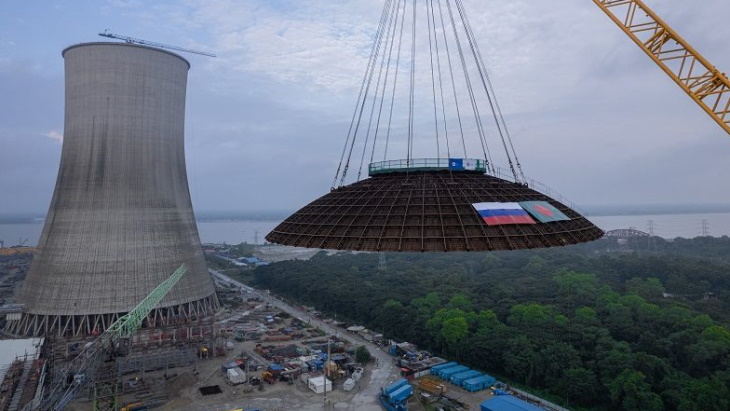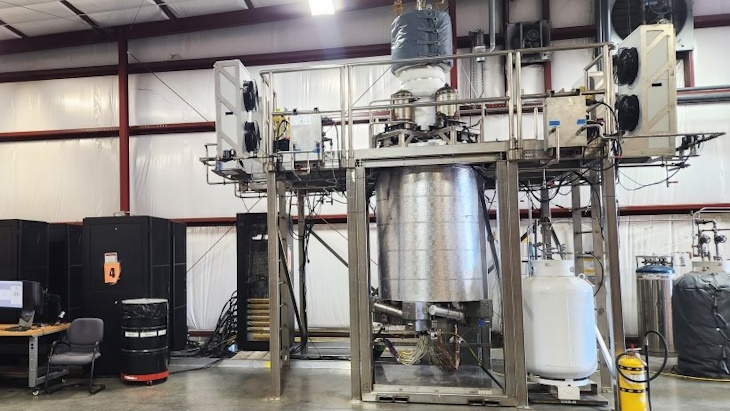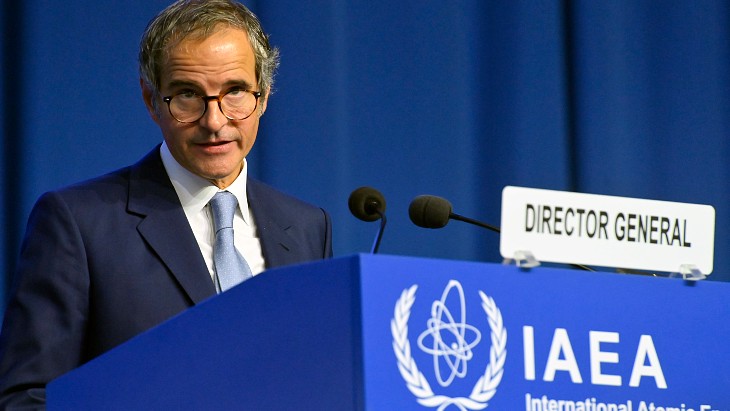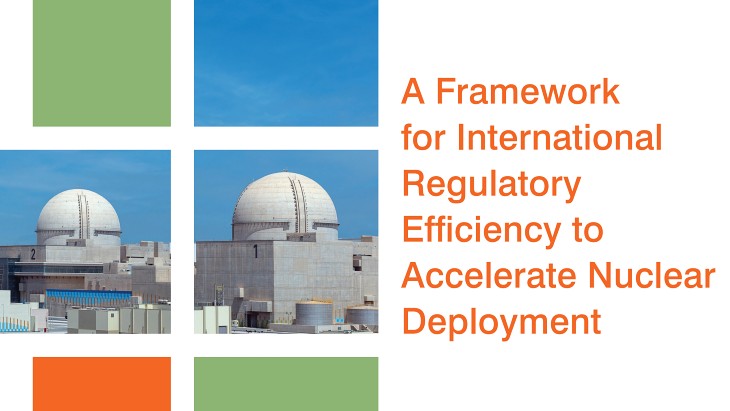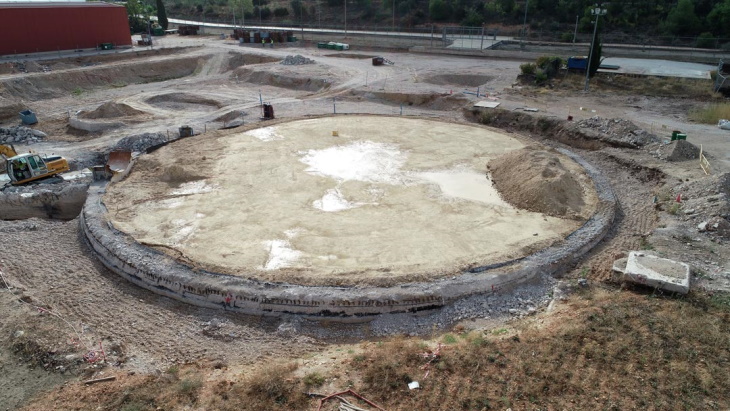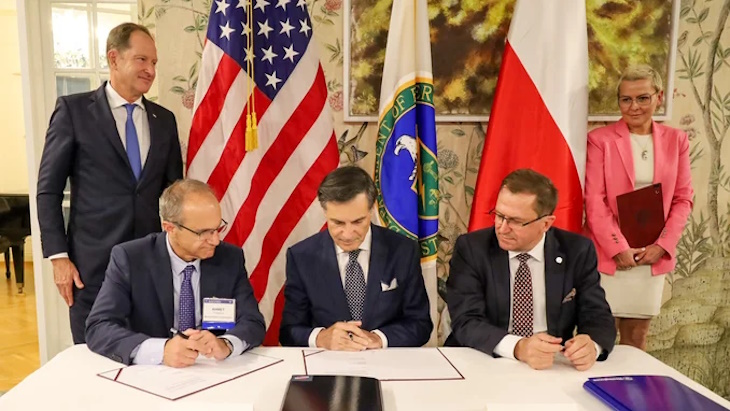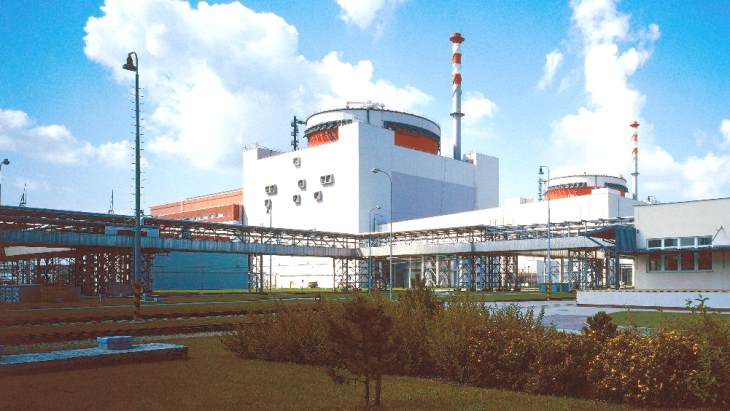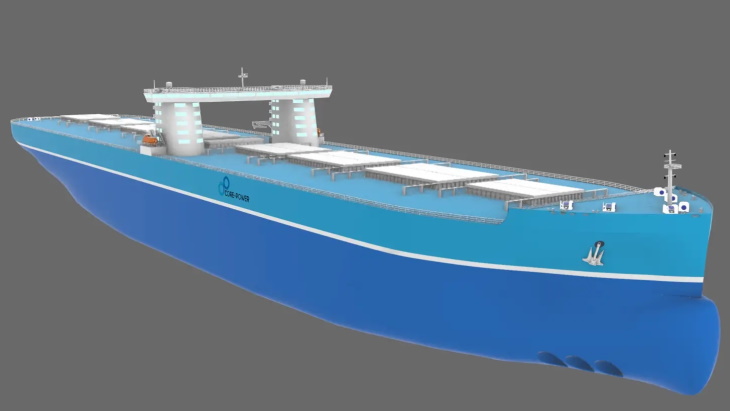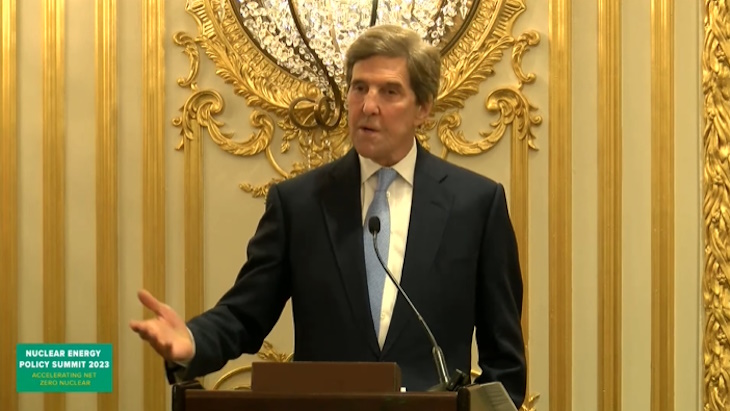- The EU’s two biggest economies are each angling for an edge
- Standoff risks undermining efforts to counter the US, China
France issued an ultimatum and Germany pushed back in an increasingly bitter standoff that lays bare the disruption unleashed by the combination of the region’s energy crisis and European Union’s green shift.
While the dispute revolves around the role of nuclear in the bloc’s future energy mix, it’s ultimately about where Europe’s industrial heart is located. Even as prices eased from record highs seen last year, positions have hardened as France and Germany seek to avoid being left behind as the EU seeks to become carbon neutral.
“Governments in both Paris and Berlin are looking how to provide electricity at the lowest cost,” said Christian Egenhofer, a senior researcher at the CEPS think-tank in Brussels. “It’s almost a matter of political survival.”
Shaken by the so-called yellow vest protests in France five years ago, energy prices remain an explosive topic for President Emmanuel Macron’s government. Chancellor Olaf Scholz’s coalition in Germany also faces intense pressure after support tumbled following a messy reform this spring to shift household heating away from fossil fuels. Opposition parties in both countries are seizing on the issue.
The EU can ill afford a protracted conflict within its industrial core. US President Joe Biden’s Inflation Reduction Act raised concerns about the US luring away investment, while the recent probe into Chinese subsidies of electric-vehicle maker reflects growing anxiety about the competitive threat posed by the Asian superpower.
The spat over energy prices is only one aspect in the tensions between the two countries. France and Germany have faced off over core elements of the Green Deal this year. First, Germany held up rules effectively banning new combustion-engine vehicles from 2035 over an exemption for so-called e-fuels. Then, France pushed for a similar carve-out for nuclear in a law on renewable energy.
Now, France is seeking to gain an edge in a revamp of EU power-market rules in order to help prolong its aging and indebted fleet of reactors. Its plan would effectively allow the government to ensure more stability for state-controlled Electricite de France SA and to tap new financing sources to extend the life of its reactors.
The French utility is badly in need of funds. EDF has said it may have to invest €25 billion ($27 billion) a year to extend the operations of 56 reactors dating from the 1980s and ‘90s, build new ones, add wind and solar capacity and upgrade grids. The problem is the energy giant is saddled with €65 billion in debt.
Berlin is blocking the initiative as Germany scrambles to rebuild its own energy system following the collapse of Russian gas supplies last year and completing a decade-long journey to shut its nuclear reactors earlier this year. Europe’s largest economy is concerned France will be in position to undercut German energy prices if Paris’s proposed regulation allows EDF to sell power at uneconomical costs.
“The point of disagreement is that the French energy infrastructure is state property,” German Economy Minister Robert Habeck said at an event in Rostock. He was responding to French counterpart Bruno Le Maire saying in an earlier public appearance that nuclear is a “red line” for the country.
Without reliable access to affordable power, Germany fears energy-intensive companies will invest elsewhere, and “we will lose this industrial base,” Habeck said. “My point is not that France has nuclear power plants; my point is that the operator of the nuclear power plants can offer cheap prices below market value.”
There is indeed cause for concern. With Germany’s energy costs still high and its supply security in doubt as the country exits coal too, France has attracted almost 50% more foreign direct investment projects than Germany over the past two years.
Confidence in Germany’s energy transition — which involves a risky expansion to hydrogen — has plummeted among the country’s businesses. Almost a third of manufacturers are either considering shifting production abroad or in the process of doing so, according to a survey by the German Chamber of Commerce and Industry. And France is ready to woo them.
Germany’s largest aluminum manufacturer Trimet had to cut back production during last year’s energy crisis. But fortunes for its smelter in Saint-Jean-de-Maurienne in southeast France turned after EDF in June offered Trimet’s French operations a new 10-year supply contract below current market prices. France’s cheap nuclear power allowed Trimet to advance its “green transformation,” Chief Executive Officer Philipp Schlüter said at the time.
“Industrial competitiveness is an important element in the discussion between Germany and France,” said Kristian Ruby, secretary general of the European power-sector association Eurelectric. “Germany is facing the issue that France can have cheaper electricity for many years from nuclear.”
In an effort to respond, Habeck has proposed temporarily subsidizing industrial power prices, but is struggling to gain widespread backing. The plan risks continuing state support of inefficient producers and slowing the much-needed transition to clean energy, according to Claudia Kemfert, an energy expert at the German Institute of Economic Research in Berlin.
“Germany’s ambitions for subsidizing the price of electricity for industry are just as misguided as France’s,” she said. “Germany and France should agree to massively expand renewable energies very quickly.”
The pressure is mounting in Paris as a domestic law that obliges EDF to sell large volumes of power at a deep discount to current wholesale prices expires at the end of 2025.
A senior French government adviser argues that, under the new regulation that should be soon presented, future power costs in France would end up being close to those in Germany and that both nations are likely to agree on similar electricity price targets for their industries.
But the two countries are on opposite poles of the energy debate, making differences all but impossible to bridge. While Germany has shut its remaining reactors after a brief extension to help navigate the energy crisis, France relies on nuclear for about two-thirds of its electricity output. But the system is badly in need of upgrades, and a spate of outages — which propelled French power prices to record levels last year — underscored the urgency.
As France and Germany continue to bicker, time is pressing for a deal to be reached. If the spat doesn’t get resolved by the end of this year, elections for European parliament next year could stall progress for months. Meanwhile, other industrial powers aren’t standing still.
“The dispute between both countries is not good for Europe,” said Henrik Ahlers, head of consultancy EY in Germany. The bloc “should rather be unified with regard to the competition with China and the USA.”
